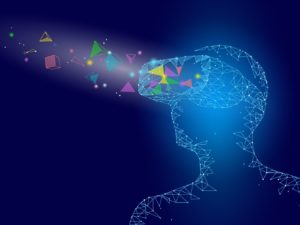The Science of Spatial Learning Inside Virtual Reality
 PhilNote: this is an excellent overview of the science behind spatial understanding.
PhilNote: this is an excellent overview of the science behind spatial understanding.
There is a strong underlying truth which continuously fuels the growth of virtual reality technology. It is not the technical supremacy or first of its kind aspects. But the astonishing biological factors which directly influences the human brain in a much deeper way.
“After two weeks, the human brain remembers 10% of what it read, 20% of what it hears and 90% of what it does.” – American educator Edgar Dale – 1946
Carefully crafted Virtual environments are very effective as they follow the same rules of the real world; 3D Objects in motion should obey the law of physics; Realistic shading, texturing and lighting to help us figure out volume, depth and distance of the virtual space; 360-Spatial audio, haptics and aroma also add value for realism.
Embodiment & Sense of Presence In VR Space
Embodiment in virtual reality is the key to induce the level of empathy and understanding. While designing first- and second-person VR experiences it is strongly recommended to use cognitive embodiment in a sensible way to increases the sense of presence and realism. This can be achieved by way of using virtually represented 3D avatars to inhabit ourselves (inside the virtual avatar) and virtual body parts for interactions.
Navigating In Space: The Real World
The Nobel Prize for Physiology in 2014 was awarded to Prof. John O’Keefe, May-Britt Moser and Edvard I. Moser for their interesting findings on how we remember and navigate in different places.
Our brain encodes the sense of space and navigation abilities using two types of nerve cells. When we enter into an environment for the first time, Place-cells inside the Hippocampus area of the brain are activated and a spatial map is created marking the locations.
At the same time, Grid-Cells in the “Entorhinal Cortex” part of the brain measures and records the distances between locations which provides a metric to the spatial maps in hippocampus. There are also “Head direction cells” which acts like a campus and “Border Cells” which stores the information on where the boundaries such as walls are. These complex networks within hippocampus constitute a comprehensive positioning system and act as the inner GPS for the brain.
Navigating In Space: The Virtual World
The interesting finding is that the brain-cells of hippocampus fires and encodes spatial memory equally both in real and virtual environments.
Another interesting finding was that in this study, the hippocampus was involved in episodic memories linking both time and space of VR experiences.
See the full story here: https://inc42.com/resources/the-science-of-spatial-learning-inside-virtual-reality/
Pages
- About Philip Lelyveld
- Mark and Addie Lelyveld Biographies
- Presentations and articles
- Tufts Alumni Bio